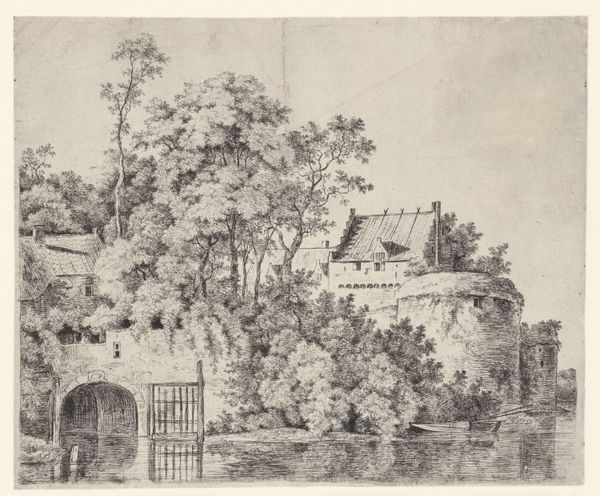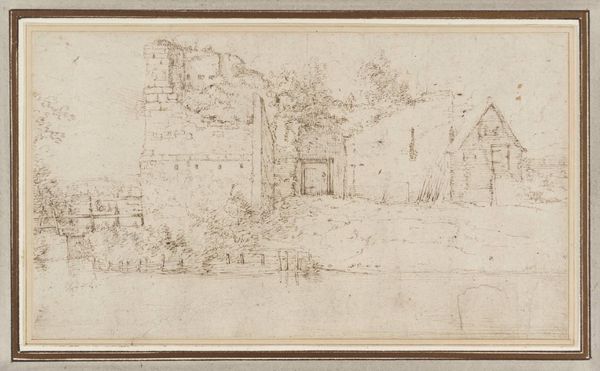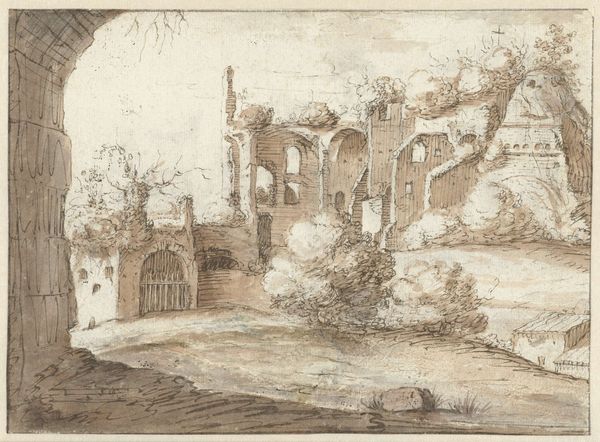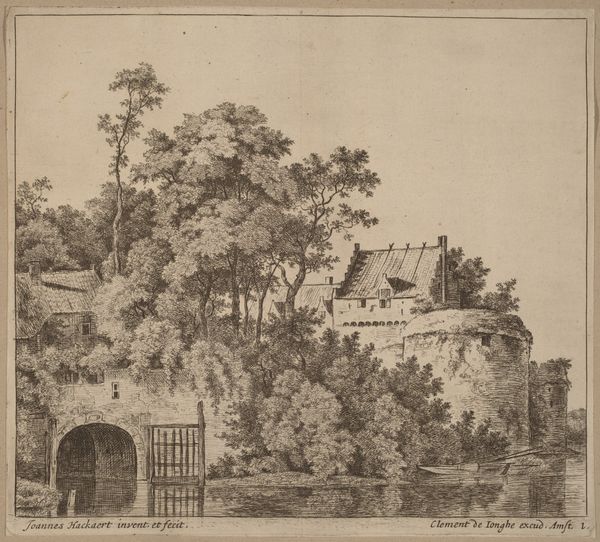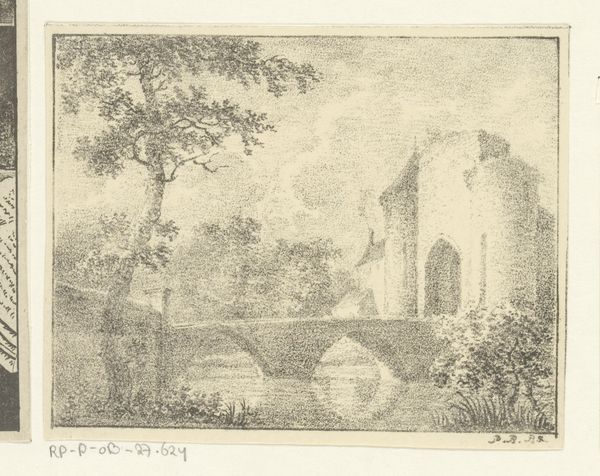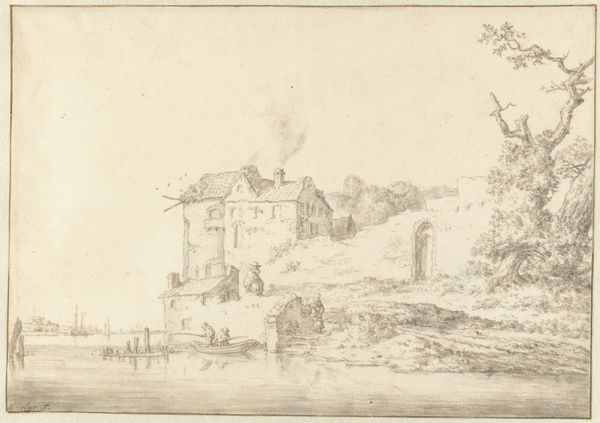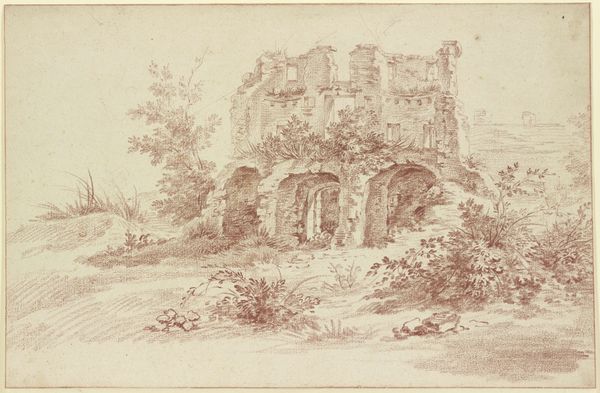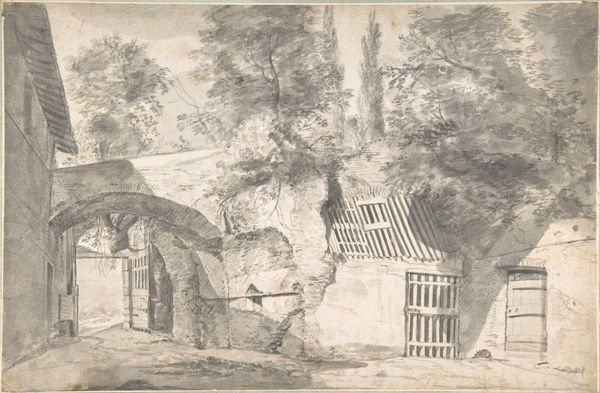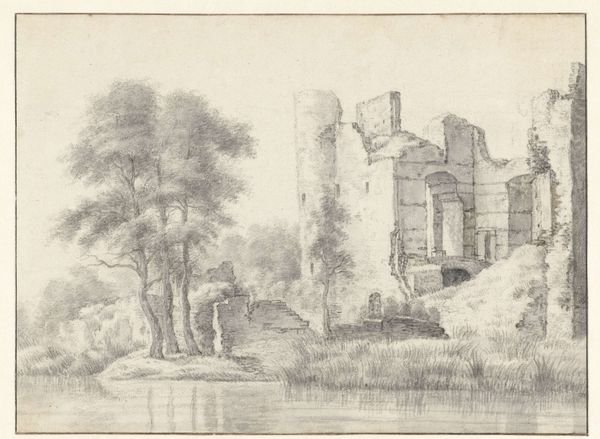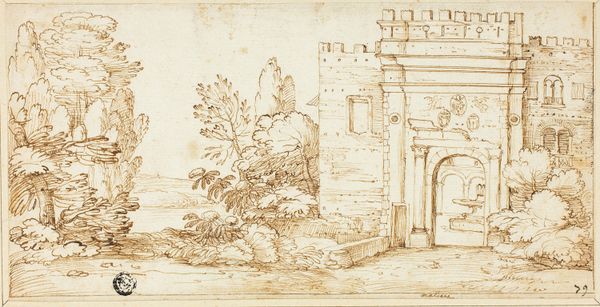
Schloßartiges Gebäude mit zwei niedrigen Rundtürmen am Wasser unter einer großen Baumgruppe
0:00
0:00
drawing, pencil, chalk, architecture
#
drawing
#
pencil sketch
#
landscape
#
geometric
#
pencil
#
chalk
#
15_18th-century
#
architecture
Copyright: Public Domain
Editor: This is a pencil and chalk drawing of a castle-like building with two low round towers near water, nestled under a large group of trees, attributed to Friedrich Wilhelm Hirt. It’s very subtle, almost ghostly in its delicate lines. What's striking is how the architecture seems to be almost reclaimed by the landscape. What do you make of it? Curator: It’s interesting you say “reclaimed." From a historical perspective, the eighteenth century was obsessed with the "picturesque," a controlled version of nature meant to evoke specific emotions. But this sketch goes beyond that. It almost portrays the castle not as a symbol of power or control, but as just another element in the landscape. Editor: So, less about showing off power and more about fitting in? Curator: Precisely. Consider the time: the Enlightenment, shifting power dynamics. Landscape art wasn’t just about pretty views; it became a site for negotiating social and political ideologies. The ‘naturalness’ of the scene can also be seen as a comment of the old architecture becoming obsolete. Look at how the trees almost overwhelm the structure. Do you think that has any implications? Editor: That's fascinating! I guess it suggests the old order is fading, becoming one with nature as new social structures emerge. Maybe that’s why it feels so ghostly, like it's a memory. Curator: Exactly. The seemingly simple landscape drawing participates in a larger dialogue about power, nature, and social change, influencing and reflecting contemporary values. Editor: I never would have considered that. Now, I see how the drawing captures more than just a pretty scene – it encapsulates a whole historical moment! Curator: Precisely. And this is why the socio-historical lens gives us new insights, bringing an aesthetic experience to a better and greater understanding of art history.
Comments
No comments
Be the first to comment and join the conversation on the ultimate creative platform.
